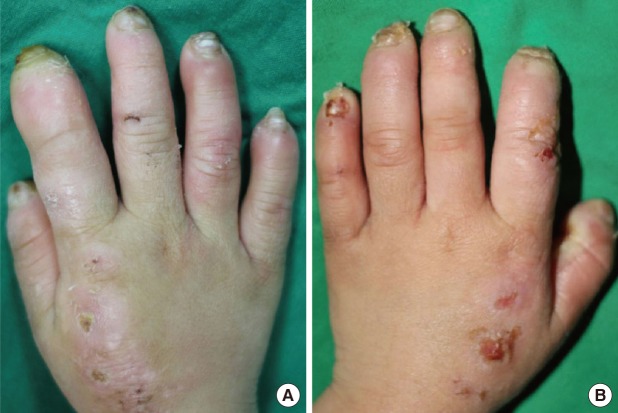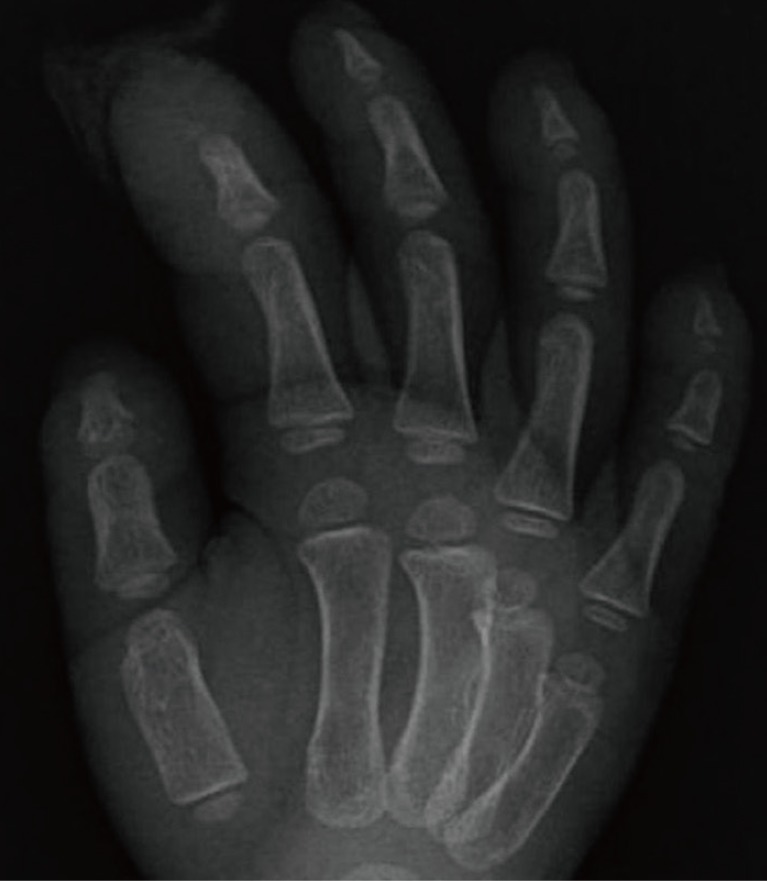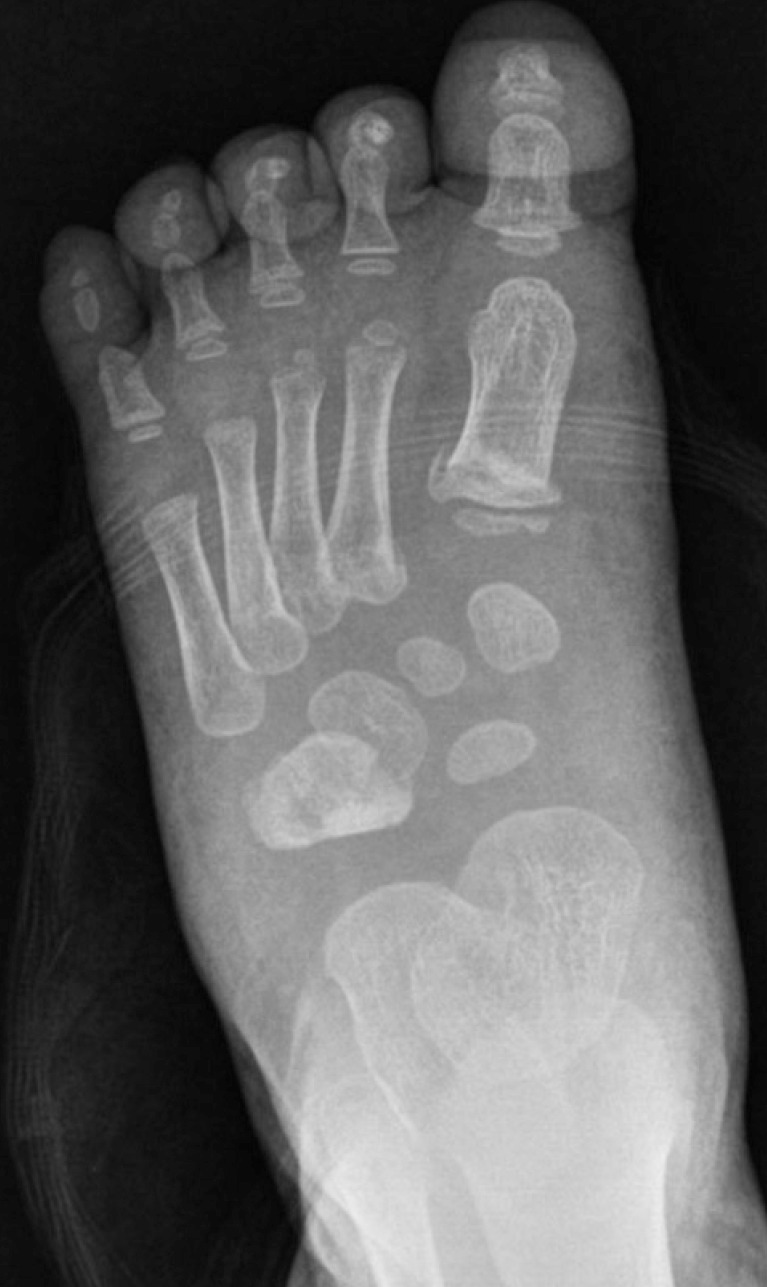Congenital Insensitivity to Pain and Anhidrosis
Article information
Hereditary sensory and autonomic neuropathy (HSAN) or hereditary sensory neuropathy has five different clinical subtypes. Congenital insensitivity to pain and anhidrosis (CIPA) is HSAN type IV. CIPA is a rare disease with an autosomal recessive inheritance. Recurrent episodes of fever, no sweating, insensitivity to pain, and self-injury are symptoms of CIPA. In addition, most patients suffering from CIPA experience mental retardation [1]. CIPA has been reported to occur with a genetic mutation of the neurotrophic tyrosine kinase 1 (NTRK1) gene [2]. This gene is encoded in the tyrosine kinase receptor, which is responsible for nerve growth factor. Thus, the signals for pain, heat, and cold cannot be transmitted to the brain. A previous study reported that approximately 20% of patients with CIPA die due to hyperpraxia before the age of 3 years [3]. Here, we report on a 33-month-old female with CIPA who presented with a pathognomonic clinical feature.
This 33-month-old female child visited our department. Both her hands were crusted, with yellowish discharge, swelling, redness, and heating sensation on her right index finger (Fig. 1). On the X-ray, the distal phalanx of the right index finger had disappeared and the distal phalanx of the contralateral index finger was destructed (Fig. 2). The patient was diagnosed with cellulitis and osteomyelitis. She sucked and bit her fingers even though her fingers had a large number of open wounds. Therefore, we applied an elastic bandage on both of her hands in order to stop the sucking. Antibiotic treatment was also administered. During follow-up, swelling was observed on the left dorsum of the foot with no pain. She was diagnosed with a fracture of the first metatarsal bone (Fig. 3). She visited the orthopedic surgery department, and a splint was applied. Two days later, she was transferred to our department because of a splint sore. At this time, we realized that she could not feel the pain. She did not sweat easily and therefore had recurrent fever and did not wear clothes well for fever control. She had repeated oral ulcers and injuries to the hands and feet, such as contact burns. The Sequenced Language Scale for Infants showed delayed mental age at 13 months and low IQ at 66 points.

(A) Right hand. On the right index finger, an erythematous swelling was observed. There was yellowish discharge and a heating sensation. Further, multiple crusts and scars were observed. (B) Left hand. On the left hand, multiple crusts and scars were observed.

X-ray of the right-hand oblique view. Distal phalangeal bone of the right index finger had disappeared.
Because of the elastic bandage, the patient was no longer able to suck and bite her fingers. Thereafter, the symptoms (yellowish discharge, swelling, redness, and heating sensation) were relieved. The patient was discharged after a total hospital stay of 16 days. A weak steroid ointment was applied on her fingers. This ointment has a bitter taste; thus, the patient's sucking behavior decreased. The fracture of the first metatarsal bone healed with union achieved by maintaining the splint in place. The sore also healed with the dressing. We recommended nerve biopsy to confirm the diagnosis; however, the patient's parents did not give their consent for the procedure.
CIPA is a rare disease with a short life expectancy. It is a hereditary disorder, but it could present with sporadic occurrence [4]. Specific treatment of CIPA is not known. Nevertheless, proper training is needed for prevention of injury. Patients suffering from CIPA usually visit the pediatrics department complaining of high fever. However, they may also visit a plastic surgeon due to recurrent wounds on the hands and feet. If the plastic surgeon is aware of CIPA, proper management could be administered in order to extend the patient's life expectancy.
Notes
No potential conflict of interest relevant to this article was reported.
